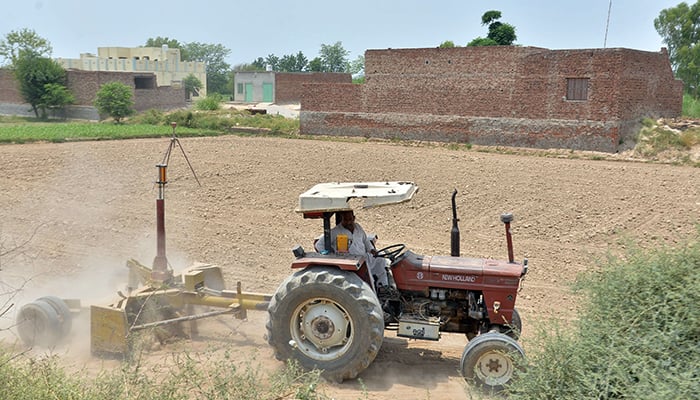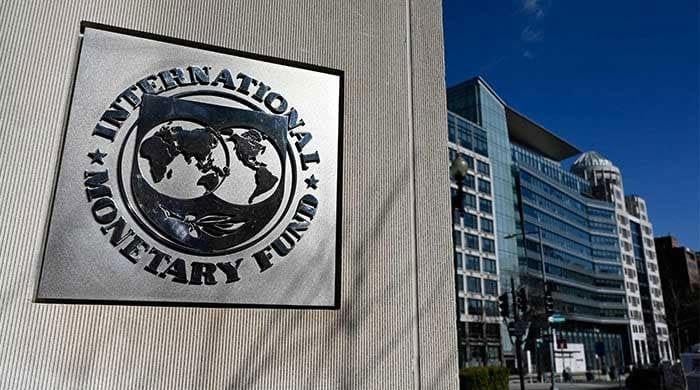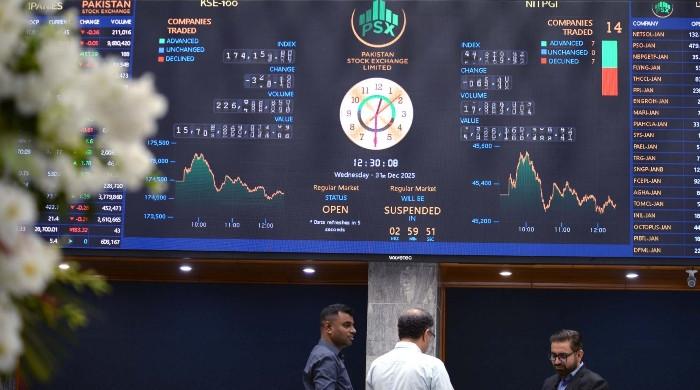Farmers ‘unhappy’ with govt’s agricultural loan claims
SBP, in its annual report, states that financial institutions achieved 97.6% of agriculture credit target
August 09, 2023

The farming community Wednesday demanded further measures from the government despite the State Bank of Pakistan (SBP) report revealing that a substantial amount of Rs1.78 trillion was disbursed by the financial institutions during the fiscal year 2022-23 under the outgoing Prime Minister Shehbaz Sharif’s initiate, ‘Kissan Package’.
The central bank, in its annual report released today, stated that the financial institutions achieved 97.6% of the agriculture credit target of Rs1,819 billion set by the SBP; however, the farming community painted a different picture.
Agriculture Republic Co-founder Aamer Hayat Bhandara, while speaking to Geo.tv, said: “Definitely, the money has poured into the agriculture sector but people faced issues when they sought loans.”
He elaborated that the youngsters, especially, were among those who faced challenges when they contacted banks for loans.
“Banks demanded papers of their land to mortgage the loan; however, mostly the lands are usually registered under their parent’s name as it is a culture here,” he said, adding that therefore, under the prime minister’s plan to encourage and facilitate the youth of Pakistan to adopt agriculture as their occupation has not fully been realised according to the spirit.
Bhandara lamented that under such circumstances the middleman becomes the beneficiary. The purpose of these loans was to enable the farmer to purchase inputs of the yield.
While the government aims to minimise the role of exploiters sitting in the market, their hold gets stronger because when farmers cannot get loans from formal channels, the banks, they go to informal sources, the middleman, who exploits them by applying higher interest rates, he highlighted.
“They exploit farmers and customers alike by first offering loans at higher interest rates and then selling the product at higher prices to the customers, even though they buy products way cheaper from the farmers,” he revealed.
It should be noted that according to the SBP report, the number of loans grew by over 25% compared to Rs1,419 billion disbursed in the fiscal year 2021-22. The outstanding portfolio of agriculture credit also registered a growth of 10% and reached Rs760 billion at the end of June 2023 compared to Rs691 billion at the end of June 2022.
The unprecedented performance in FY23, according to the central bank, was attributed to the collective efforts of the financial institutions and various initiatives taken in the backdrop of several challenges including the devastating floods of 2022, rising input costs and monetary tightening in recent years.
The SBP mentioned that among the various initiatives, SBP’s Champion Bank Model and Agriculture Credit Scoring Model played a key role in supporting financial institutions in extending agriculture financing, particularly in the underserved areas where significant growth was registered in FY2023.
“In addition, the strategic guidance of Agricultural Credit Advisory Committee (ACAC) coupled with rigorous monitoring of financing by SBP provided further support in accelerating agriculture finance,” the report read, adding that the last ACAC meeting, held in December 2022, brought the industry’s focus to the potential of Islamic banking for meeting the needs of the farming community. As a result, Islamic agriculture financing also grew significantly during the year.
Endorsing Bhandara’s views, Concave Agri Services President Muhammad Ali Iqbal told Geo.tv that the amount disbursed under the agri credit schemes by the financial institutions has not made a significant impact on the financial requirements of small and medium farmers.
It was learnt that under the Kissan Package, mostly credit facilities were provided against Agro-machinery with around a 7% interest rate to be paid by the farmers on a district-wise quota basis.
“This kind of facilitation did enable the large-scale farmers to reap benefits. However, due to the rupee-dollar parity the prices of machinery also escalated significantly,” he said.
Citing the report, Iqbal mentioned that the input products’ prices have also increased at least 50% making farming resources meagre for the small and medium farmers. In return, the financial credit requirements also surged outstandingly making it easier for banks to achieve the given target by the central bank.
“It is pertinent to mention that the average loan size for agriculture was around over one million per farmer, which is way beyond the requirements of the small landholders,” he maintained, suggesting that it is now better for policymakers to introduce micro and small credit facilities with concessional interest rates to make farming easy for small and subsistent farmers.
Moreover, the central bank — in a statement released along with the report — highlighted that the state bank’s efforts were further bolstered by the prime minister’s Kissan Package, which provided stimulus to revive the flow of agriculture financing especially in the flood-affected areas. Under the Kissan Package, various measures were implemented to strengthen the agriculture sector in flood-affected regions, which included a waiver of markup on outstanding small loans, interest-free loans for small and marginalized farmers, and risk coverage for banks.
It should be noted that the SBP has also released the annual ranking of banks under the Agriculture Credit Scoring Model to bring transparency and competition among the various agriculture credit providers.
SBP’s scoring model gauges the agriculture credit performance of banks against a multi-dimensional criterion with a particular focus on regional and sectoral performance. Introduced in FY22, the model facilitated the banks to focus on areas where improvement is required to achieve their targets, particularly on improving qualitative aspects.









